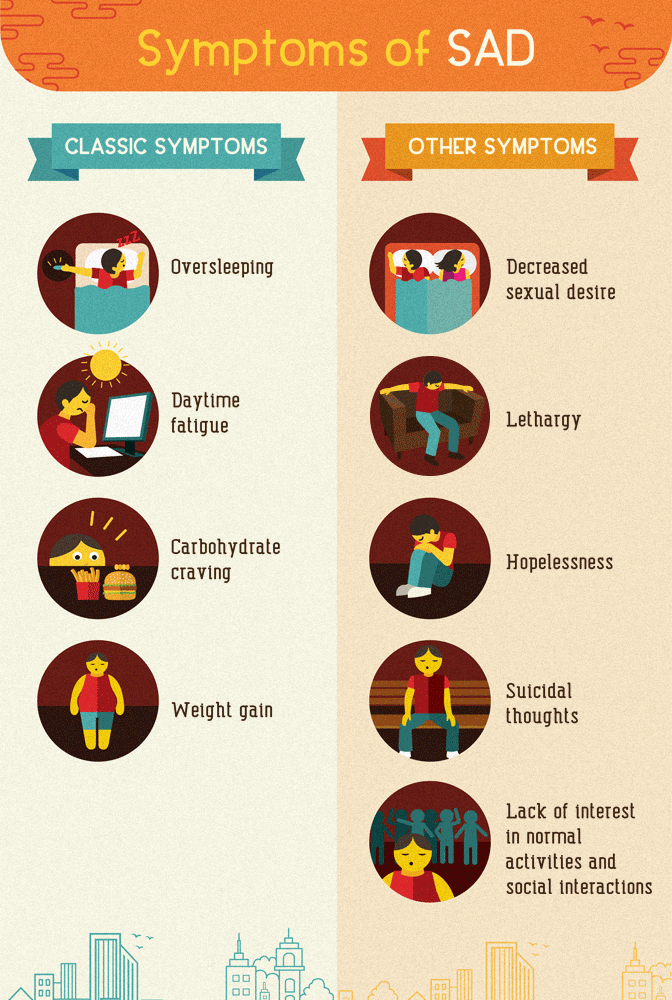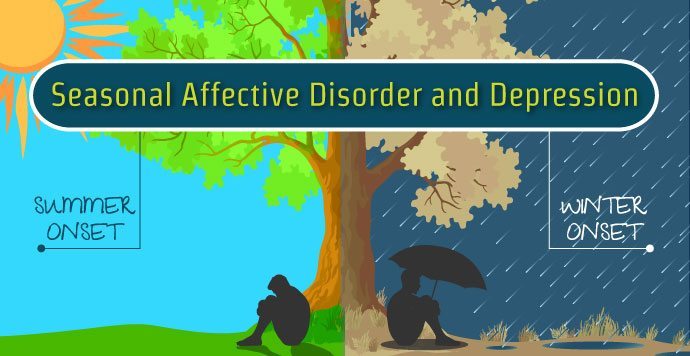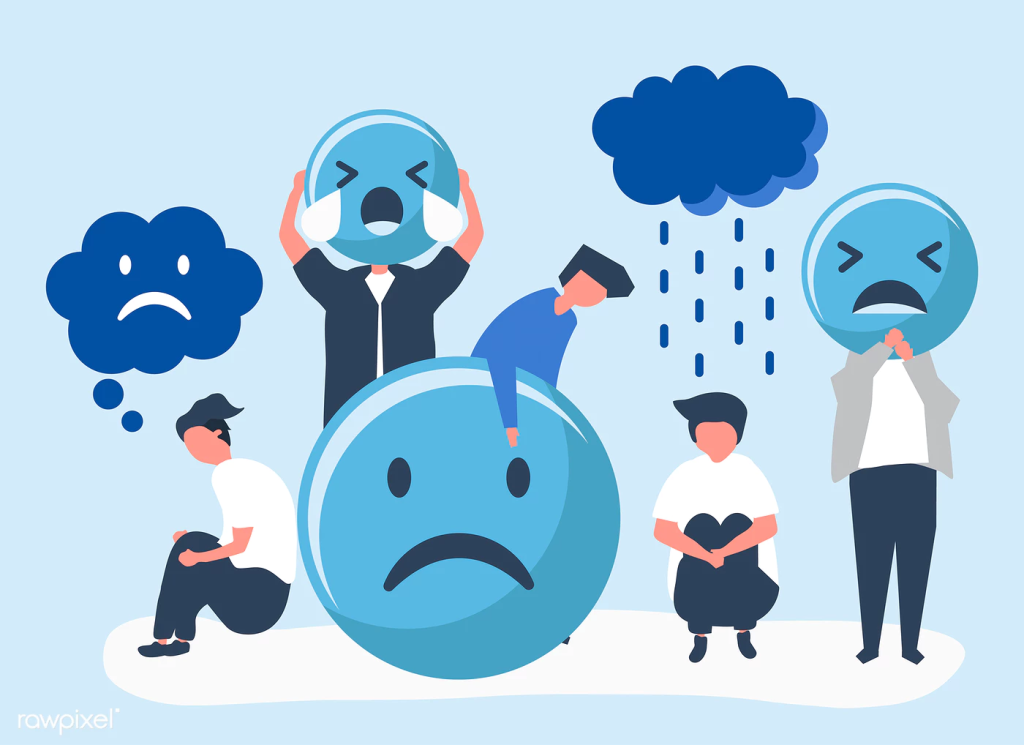Do you feel a little down during the winter? You might be experiencing seasonal affective disorder or SAD. SAD is a type of depression that occurs during certain seasons. In this blog post, we will discuss everything you need to know about SAD. We will cover the symptoms, treatment options, and ways to prevent SAD from occurring. If you think you might have SAD, it is important to see a doctor for diagnosis and treatment.
Contents
- 1 What is Seasonal Affective Disorder?
- 1.1 Symptoms of Seasonal Affective Disorder
- 1.2 Causes Of Seasonal Affective Disorder
- 1.3 What Triggers Seasonal Affective Disorder?
- 1.4 Negative Impact Of Seasonal Affective Disorder
- 1.5 Treatment Options For Seasonal Affective Disorder
- 1.6 Medications For Seasonal Affective Disorder
- 1.7 Lifestyle Changes For Seasonal Affective Disorder
- 1.8 How To Cope With Seasonal Affective Disorder?
- 1.9 How To Prevent Seasonal Affective Disorder?
- 1.10 Helping Someone With Seasonal Affective Disorder
- 2 Conclusion
- 3 A Word From Therapy Mantra
What is Seasonal Affective Disorder?

Seasonal Affective Disorder, or SAD, is a type of depression that follows a seasonal pattern. The most common type of SAD is winter-onset SAD, which occurs during the fall and winter months. Less common types include summer-onset SAD (occurring in the spring and summer) and mixed-seasonal SAD (occurring in both the fall and winter, as well as the spring and summer).
Symptoms of Seasonal Affective Disorder
People with SAD may experience a variety of symptoms, including:

- Feeling depressed most of the time
- Feeling sad, hopeless, worthless, and/or helpless
- Having little interest or pleasure in activities you usually enjoy
- Feeling tired and sluggish most of the time: having trouble sleeping, or sleeping too much
- Eating more or less than usual, especially a craving for sugary foods
- Having problems concentrating, remembering things, and making decisions
- Feeling restless and irritable: experiencing changes in weight (gain or loss).
- Having low energy or fatigue
- Losing interest in activities you once enjoyed
- Experiencing changes in your appetite or weight (usually a decrease in appetite and weight)
- Sleeping too much or too little
- Feeling restless or irritable
- Having difficulty concentrating
- Having low energy levels
- Experiencing changes in appetite or weight
- Sleeping too much or not enough
- Having difficulty concentrating or making decisions
- Feeling irritable or restless
- Experiencing feelings of hopelessness or worthlessness
If you are experiencing any of these symptoms, it is important to speak to your doctor. They can help you determine if you have SAD and provide you with treatment options.
Causes Of Seasonal Affective Disorder
The exact cause of SAD is unknown, but there are several factors that may contribute to it. These include:
- Hormonal changes: Some people believe that the changing hormone levels during different seasons may play a role in causing SAD. For example, levels of melatonin (a hormone that helps regulate sleep) are higher during the winter months, which could affect your mood.
- Changes in sunlight exposure: Exposure to sunlight is thought to help regulate moods and can have an impact on serotonin levels (a chemical in the brain that affects mood). When there is less sunlight exposure during the winter months, some people believe this could lead to symptoms of SAD.
- Psychological factors: Stressful life events or problems such as relationship troubles or financial stress can contribute to SAD.
- Biological factors: There may be a genetic component to SAD, as it tends to run in families.
What Triggers Seasonal Affective Disorder?

While the causes of SAD are not fully understood, there are certain things that may trigger it. Some people find that they experience symptoms of SAD when:
- There is a change in their daily routine, such as during the holidays
- They spend more time indoors
- Also, they travel to a location with a different climate than what they are used to
- They are exposed to less sunlight than usual
Negative Impact Of Seasonal Affective Disorder
People with SAD may experience a variety of negative impacts on their life, including:
- Having difficulty functioning at work or school: This can include having problems concentrating, remembering things, or making decisions.
- Feeling isolated from friends and family: Some people may feel like they don’t want to leave their home or that they don’t have the energy to socialize.
- Having low self-esteem: People with SAD may feel like they are a “failure” because they cannot seem to “snap out of it.”
- Suicidal thoughts or behaviors: This is rare, but some people with SAD may experience suicidal thoughts.
- Feeling isolated from friends and family: Some people may feel like they don’t want to leave their home or that they don’t have the energy to socialize.
- Experiencing suicidal thoughts or thoughts of harming themselves: This is rare, but some people with SAD may experience suicidal thoughts.
Treatment Options For Seasonal Affective Disorder

If you are diagnosed with SAD, there are a number of treatment options available. Treatment usually involves a combination of therapies and may include:
- Light therapy: This involves exposure to bright light for a set amount of time each day. It is thought that this type of therapy can help regulate moods and improve symptoms of SAD.
- Psychotherapy: This type of therapy involves talking with a therapist about your thoughts and feelings. It can help you understand why you feel depressed during certain seasons and find ways to manage your symptoms.
- Medication: Your doctor may prescribe antidepressants to help improve your mood during the winter months.
- Lifestyle changes: There are a number of lifestyle changes you can make to help manage your SAD symptoms, such as getting more exercise, spending time outdoors, and avoiding caffeine and alcohol.
Medications For Seasonal Affective Disorder
If you are diagnosed with SAD, your doctor may prescribe antidepressants to help improve your mood during the winter months. There are a number of different types of antidepressants, and each one works differently. It may take some time to find the medication that works best for you.
Some common types of antidepressants used to treat SAD include:
- Selective serotonin reuptake inhibitors (SSRIs): SSRIs are the most commonly prescribed type of antidepressant and work by increasing levels of serotonin in the brain.
- Serotonin-norepinephrine reuptake inhibitors (SNRIs): SNRI medications also work by increasing levels of serotonin and norepinephrine in the brain.
- Tricyclic antidepressants (TCAs): TCAs are an older type of antidepressant that works by blocking certain receptors in the brain.
- Monoamine oxidase inhibitors (MAOIs): MAOIs are another older type of antidepressant that works by stopping an enzyme in the brain from breaking down serotonin, norepinephrine, and dopamine.
It is important to note that not everyone who takes antidepressants will experience relief from their SAD symptoms. It may take some time and experimentation to find the medication that works best for you.
Lifestyle Changes For Seasonal Affective Disorder

There are a number of lifestyle changes you can make to help manage your SAD symptoms. Some examples include:
- Getting more exercise: Exercise can help improve moods and energy levels.
- Spending time outdoors: Exposure to natural light can help regulate your body’s melatonin production and improve symptoms of SAD.
- Avoiding caffeine and alcohol: Caffeine and alcohol can worsen moods and make it harder to manage symptoms of SAD.
- Living a healthy lifestyle: Eating healthy foods, getting enough sleep, and managing stress can all help improve your moods during the winter months.
How To Cope With Seasonal Affective Disorder?
If you are struggling with SAD, there are a few things you can do to help cope with it. These include:
- Talk to your doctor: It is important to speak to your doctor if you are experiencing symptoms of SAD. They can provide you with treatment options and support.
- Create a support system: It can be helpful to have people you can talk to about your SAD. These could be friends, family members, or a therapist.
- Identify triggers: Once you know what triggers your symptoms of SAD, you can try to avoid these things or prepare for them ahead of time.
- Stay positive: Remember that symptoms of SAD usually improve over time and with treatment. Try to stay positive and focus on the good things in your life.
How To Prevent Seasonal Affective Disorder?
There are a few things you can do to help reduce your risk of developing SAD. These include:
- Spending time outdoors: Get outside and enjoy the sun whenever possible. Exposure to sunlight is thought to help regulate moods.
- Staying active: Exercise regularly, even during the winter months. Physical activity can help improve your mood and energy levels.
- Eating healthy: Make sure to eat a balanced diet and avoid processed foods. Eating healthy can help boost your mood and energy levels.
- Getting enough sleep: Make sure to get plenty of restful sleep every night. This will help keep you feeling energized and upbeat during the winter months. Seasonal Affective Disorder (SAD) is a type of depression that occurs during certain seasons, usually the winter months.
Helping Someone With Seasonal Affective Disorder

If you know someone who is struggling with SAD, there are a few things you can do to help them. These include:
- Encouraging them to seek treatment: It is important for people with SAD to get treatment, which usually involves a combination of therapies.
- Helping them stay positive: Remember that symptoms of SAD usually improve over time and with treatment. Try to encourage your loved ones to stay positive and focus on the good things in their life.
- Providing support: Offer emotional support to your loved ones and be there for them when they need it.
- Reminding them to get outside and enjoy the sun: Exposure to sunlight is thought to help regulate moods, so remind your loved ones to get outside and enjoy the sun whenever possible. Seasonal Affective Disorder (SAD) is a type of depression that occurs during certain seasons, usually the winter months. If you are diagnosed with SAD, there are a number of treatment options available.
Conclusion
Seasonal Affective Disorder is a type of depression that occurs when the seasons change. Symptoms can include mood swings, fatigue, and weight gain/loss. There are ways to help manage seasonal affective disorder symptoms. You can take medication or natural supplements, like vitamin D3 or light therapy. It’s important to get enough sunlight during the day and be mindful of how much time you spend outside. But it is also important to get enough sleep at night. This will help balance out serotonin levels, which will reduce the number of depressive episodes.
Serotonin plays an important role in regulating moods, as well as appetite sensations, and hormone release rates. You can also try to keep active during the winter months and eat a healthy diet. These things will help improve your mood and energy levels. If you are struggling with SAD, it is important to speak to your doctor about treatment options. You don’t have to struggle through the winter alone. There are people who care and want to help.
A Word From Therapy Mantra
Your mental health — Your psychological, emotional, and social well-being — has an impact on every aspect of your life. Positive mental health essentially allows you to effectively deal with life’s everyday challenges.
At TherapyMantra, we have a team of therapists who provide affordable online therapy to assist you with issues such as depression, anxiety, stress, workplace Issues, addiction, relationship, OCD, LGBTQ, and PTSD. You can book a free therapy or download our free Android or iOS app.


